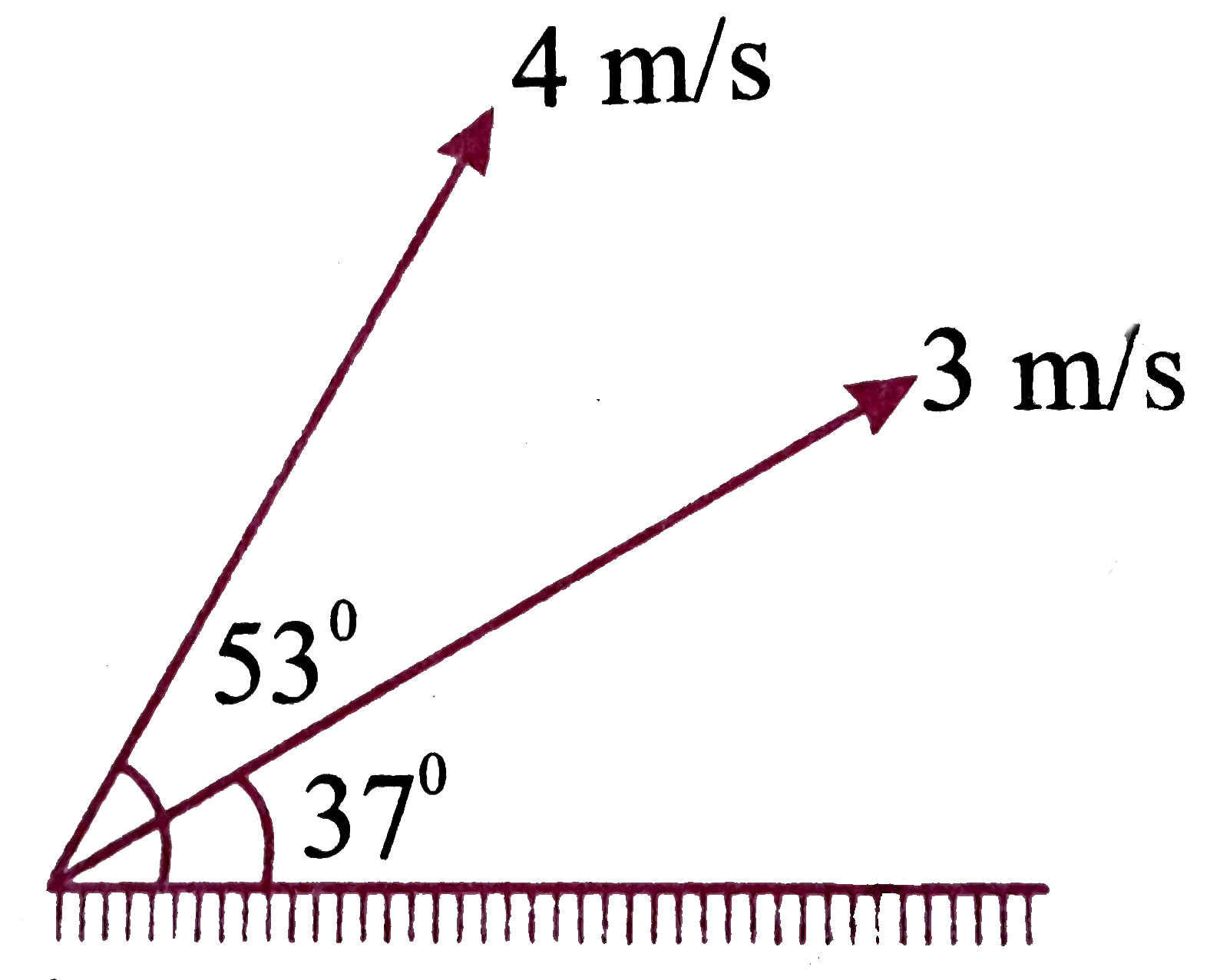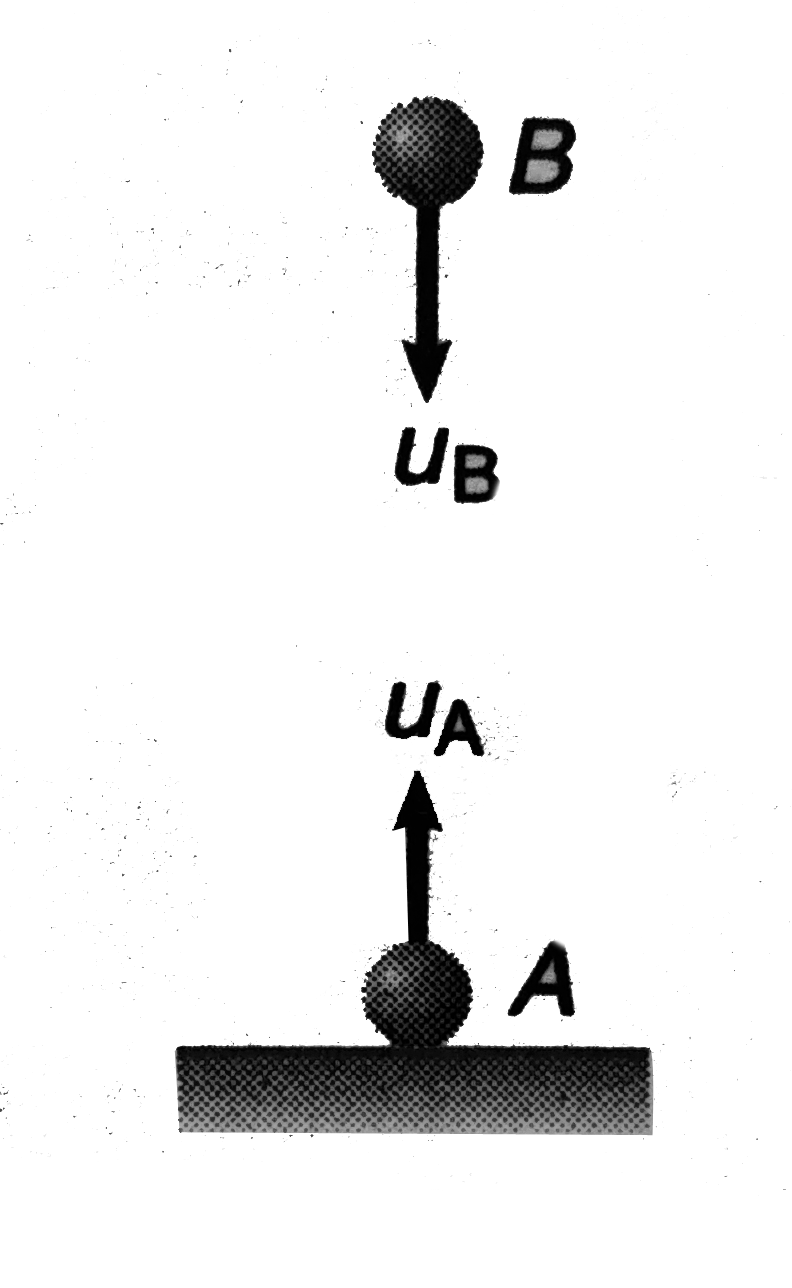Two particles are released from the same height at an interval of 1s. How long aftger the first particle begins to fall will the two particles be 10m apart? (g=10m/s2)
1.5s
2s
1.25s
2.5s
The correct Answer is:A
To solve the problem, we need to determine how long after the first particle begins to fall the two particles will be 10 meters apart. Let's break it down step by step.
Step 1: Define the variables
Let:
- t = time in seconds after the first particle is released.
- The second particle is released 1 second later, so its time of fall is t−1.
Step 2: Use the second law of motion
The distance fallen by an object under free fall is given by the equation:
s=ut+12at2
Since both particles are released from rest, the initial velocity u=0. The acceleration a=g=10m/s2 (downward).
Step 3: Calculate the distance for the first particle
For the first particle (released at t=0):
s1=0⋅t+12gt2=12gt2
Substituting g=10:
s1=12⋅10⋅t2=5t2
Step 4: Calculate the distance for the second particle
For the second particle (released at t=1):
s2=0⋅(t−1)+12g(t−1)2=12g(t−1)2
Substituting g=10:
s2=12⋅10⋅(t−1)2=5(t−1)2
Step 5: Set up the equation for the distance apart
According to the problem, the distance between the two particles when they are 10 meters apart is given by:
s1−s2=10
Substituting the expressions for s1 and s2:
5t2−5(t−1)2=10
Step 6: Simplify the equation
Factor out the common term:
5(t2−(t−1)2)=10
Dividing both sides by 5:
t2−(t−1)2=2
Step 7: Expand and simplify
Expanding (t−1)2:
t2−(t2−2t+1)=2
This simplifies to:
t2−t2+2t−1=2
2t−1=2
Step 8: Solve for t
Adding 1 to both sides:
2t=3
Dividing by 2:
t=1.5s
Final Answer
The two particles will be 10 meters apart after 1.5 seconds from the moment the first particle begins to fall.
---
Let:
- t = time in seconds after the first particle is released.
- The second particle is released 1 second later, so its time of fall is t−1.
The distance fallen by an object under free fall is given by the equation:
s=ut+12at2
Since both particles are released from rest, the initial velocity u=0. The acceleration a=g=10m/s2 (downward).
For the first particle (released at t=0):
s1=0⋅t+12gt2=12gt2
Substituting g=10:
s1=12⋅10⋅t2=5t2
For the second particle (released at t=1):
s2=0⋅(t−1)+12g(t−1)2=12g(t−1)2
Substituting g=10:
s2=12⋅10⋅(t−1)2=5(t−1)2
According to the problem, the distance between the two particles when they are 10 meters apart is given by:
s1−s2=10
Substituting the expressions for s1 and s2:
5t2−5(t−1)2=10
Factor out the common term:
5(t2−(t−1)2)=10
Dividing both sides by 5:
t2−(t−1)2=2
Expanding (t−1)2:
t2−(t2−2t+1)=2
This simplifies to:
t2−t2+2t−1=2
2t−1=2
Adding 1 to both sides:
2t=3
Dividing by 2:
t=1.5s
The two particles will be 10 meters apart after 1.5 seconds from the moment the first particle begins to fall.
Topper's Solved these Questions
- KINEMATICS 1BOOK - DC PANDEY ENGLISHCHAPTER - KINEMATICS 1EXERCISE - MCQ_TYPE
27 Videos
- KINEMATICS 1BOOK - DC PANDEY ENGLISHCHAPTER - KINEMATICS 1EXERCISE - COMPREHENSION_TYPE
19 Videos
- KINEMATICSBOOK - DC PANDEY ENGLISHCHAPTER - KINEMATICSEXERCISE - INTEGER_TYPE
10 Videos
- LAWS OF MOTIONBOOK - DC PANDEY ENGLISHCHAPTER - LAWS OF MOTIONEXERCISE - Medical entrances gallery
39 Videos
Similar Questions
Two diamonds begin a free fall from rest from the same height, 1.0 s apart. How long after the first diamond begins to fall will the two diamonds be 10 m apart? Take g=10m/s2.
View SolutionTwo bodies begin a free fall from rest from the same height 2 seconds apart. How long after the first body begins to fall, the two bodies will be 40 m apart? (Take g = 10ms−2)
1 s
2 s
3 s
4 s
View SolutionA particle is thrown vertically up from the top of a building of height 20m with initial velocity u. A second particle is released from the same point 1 second later. If both particles reach the ground at the same instant ,3u=m/s. [Takeg=10m/s2]
View SolutionTwo balls of equal masses are thrown upwards, along the same vertical direction at an interval of 2 seconds, with the same initial velocity of 40m/s. Then these collide at a height of (Take g=10m/s2).
View SolutionTwo particles are projected with speed 4m/s and 3m/s simultaneously from same point as shown in the figure. Then:

View SolutionA particle is projected radially outwards from the surface of a planet with an initial speed of 4.0km/s. Maximum height attained by the particle is h=900km. Find the radius of the planet taking g=10m/s2.
View SolutionFrequency of a particle executing SHM is 10 Hz. The particle is suspended from a vertical spring. At the highest point of its oscillation the spring is unstretched. Maximum speed of the particle is (g=10m/s2
View SolutionTwo particles A and B of masses 1kg and 2kg respectively are projected in the directions shown in figure with speeds uA=200m/s and uB=50m/s. Initially they were 90m apart. They collide in mid air and stick with each other. Find the maximum height attained by the centre of mass of the particles. Assume acceleration due to gravity to be constant.
(g=10m/s2)

View SolutionA particle of 2m is projected at an angle of 45°with horizontal with a velocity of 20√2 m/s. After 1 sec. explosion takes place and the particle is broken into two equal pieces. As a result of expansion one point comes to rests. The maximum height from the ground attained by the other part is (g=10m/s2)
View SolutionA particle is projected along an inclined plane as shown in figure. What is the speed of the particle when it collides at point A ? (g=10ms2)

View Solution
